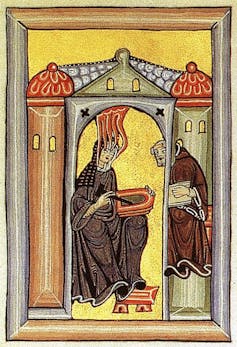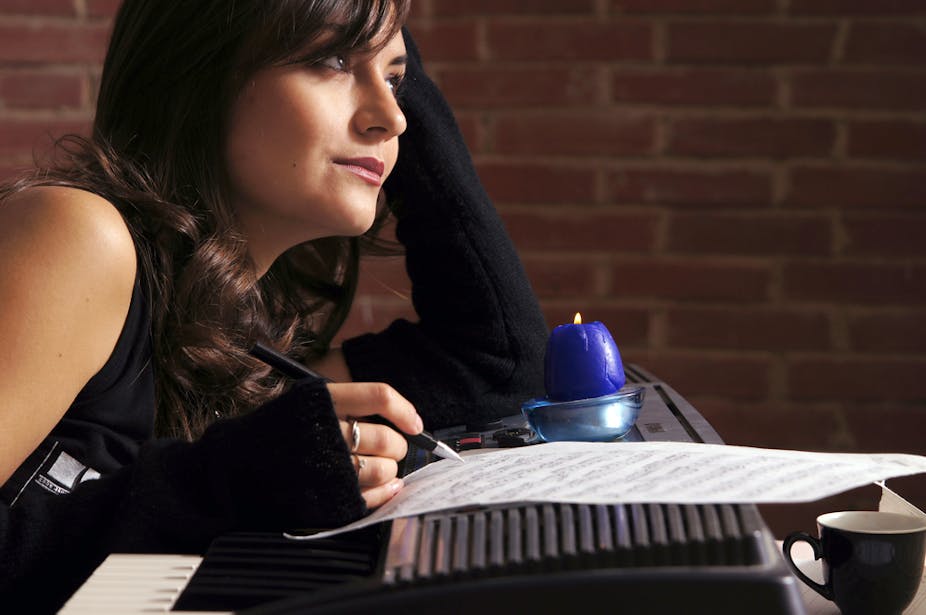Women make up 25% of the Australian composing population but still get a raw deal when it comes to having their music performed.
Emma Ayres, presenter of the breakfast show on Classic FM, recently wrote that her radio station rarely plays female composers. Female composers have been virtually ignored in two recent ABC top 100 countdowns, ABC Classic FM’s Classic 100: Music in the Movies and triple j’s Hottest 100 of 20 Years.
The New Music Network (NMN), a collective of contemporary music ensembles from across Australia, also sidelines women’s music. Even though its 2013 publicity machine boasts a diverse range of music – “collaborative projects, sound installations, improvised performances, and fascinating experimental sounds” – women’s music barely signifies. Of 18 groups in the NMN’s 2013 programs only six will perform music by women. Of the total of 80 works listed for performance, only nine (or 11%) are by women.
So why is there such a disparity between the number of female composers represented and the number performed?
Emma Ayres is right when she says this is due to a combination of three factors. First, their music lacks exposure. It is unfamiliar, thus not desired by audiences. Second, there are fewer female composers, and so there is less of their music available for performance. And third is the longstanding view, overhanging from 19th century aesthetics, that women’s music is inferior when compared to music by men.
Playing catch up
It was not until the 1970s that historical musicologists began to unearth women’s suppressed music. Names such as Hildegard of Bingen, Elisabeth Claude Jaquet de la Guerre, Barbara Strozzi, Clara Schumann, Fanny Mendlessohn, and numerous others in the 20th century were exhumed. Their music is now widely performed. Some of these women, Hildegard, in particular, have been hailed as trailblazers.

The idea women compose “serious” music is a relatively new phenomenon. Music students in institutions during the 1950s, 60s and 70s did not know of their existence.
With the advent of second wave feminism, music students began to ask questions and gradually the names of female composers began to appear in music curricula. Some now have entries in music dictionaries, such as the esteemed Grove Music Online, and have their music discussed in standard music history textbooks.
Despite this, women’s music struggles to be heard in mainstream concert venues. Perhaps this is understandable, given mainstream activity in classical music devotes most of its energies to performing work of great male composers. Very little women’s music fits the category of masterwork.
Adjusting the balance
In the 21st century, we’ve seen the rise of new genre categories and new kinds of music; some of it using electronic media, some of it performative and improvisational, and some of it cross-breeding with other art forms. But why is it that new, risk-taking music groups are still resistant to seriously including women’s music?
There are no easy answers. In the 1990s, women got together and put on their own music festivals in Adelaide, Melbourne, Sydney and Canberra. But this activity soon fizzled.
In the same decade, positive discrimination strategies were adopted. Last year the director of Brisbane’s Restrung festival of new music, Danielle Bentley, decided to positively discriminate for women’s music, inviting ensembles to include music by women in their programs. This yielded an unprecedented result, skewing the performance of women’s music to 61%.
But despite the effectiveness of affirmative action in the short term, it does not work in the long term. This is partly because it is too difficult to police. Affirmative action policies are also politically and socially divisive. Research suggests they stigmatise those who have benefited, compromising the self-esteem and self-respect of beneficiaries who know they have been given preferential treatment.
Solving the problem
All composers face similar pressures: resistance by listeners and institutions to new music, financial constraints, and the tendency of commissions to go to well-known composers. But women composers feel these pressures more acutely.
All sectors of the industry have a role to play in reducing the barriers women face to becoming composers and securing their careers:

Tertiary institutions can include much more women’s music in their curricula
Women composers can better promote themselves, making use of social media, websites and blogs
Successful male composers can offer their services as mentors to women composers, and introduce them to men’s institutional networks
Funding bodies ought to include special categories for women composers
Orchestras and performance groups should stop offering excuses that their programming decisions are based on aesthetic criteria and start looking for opportunities to commission and perform women composers whenever they can.
The ultimate goal, however, is to reframe the entire debate away from gender categories that reinforce men’s music as the norm and perpetuate a negative notion of difference. But don’t hold your breath – this may take a while.

